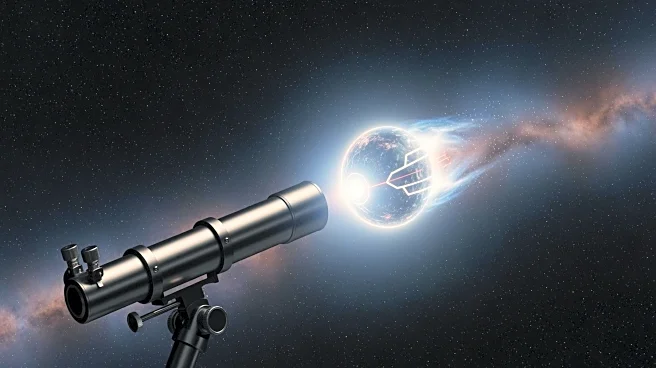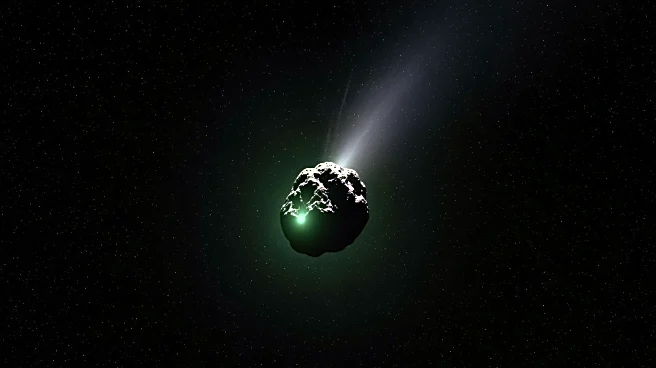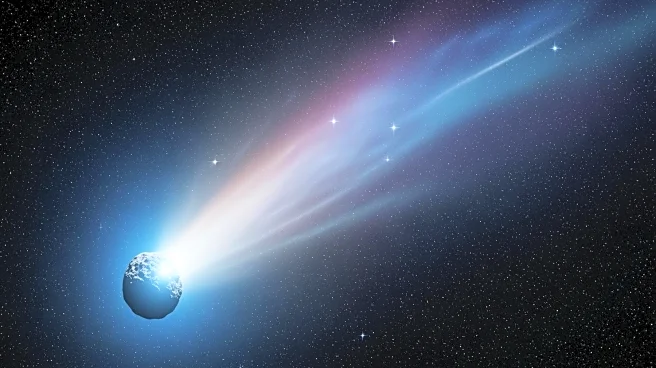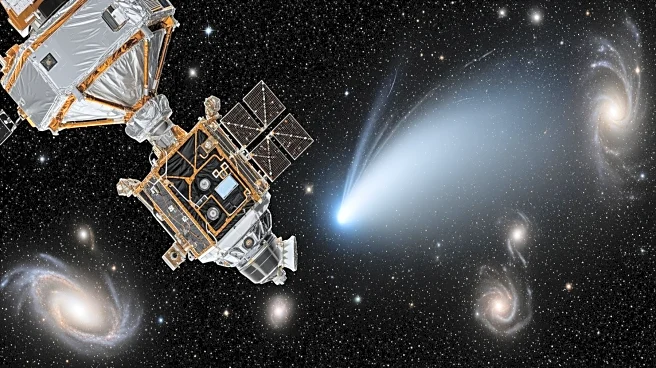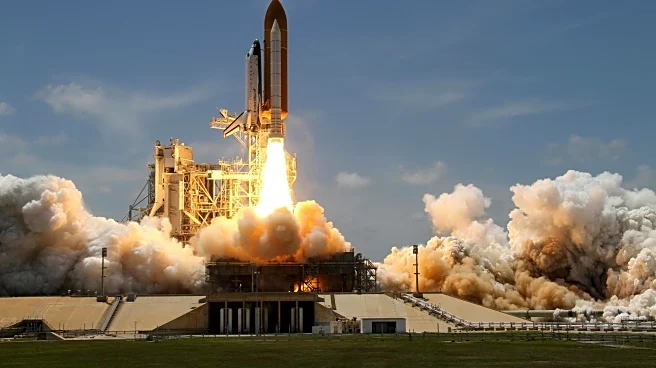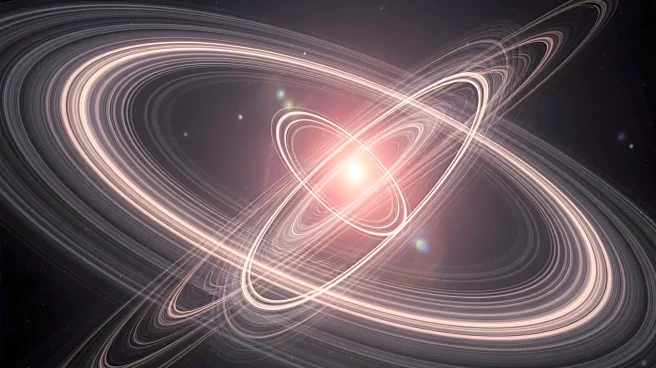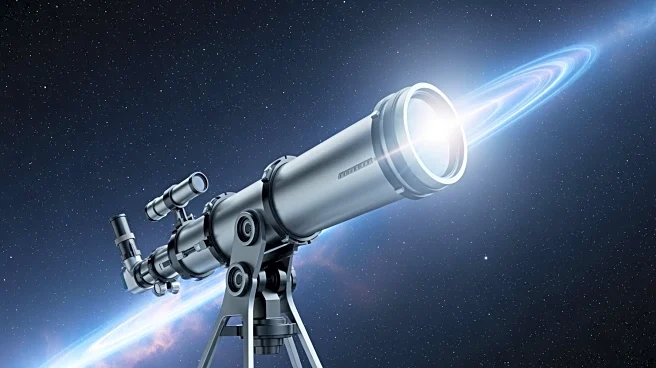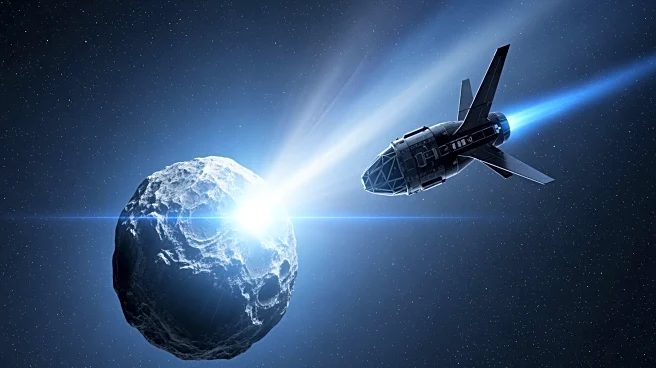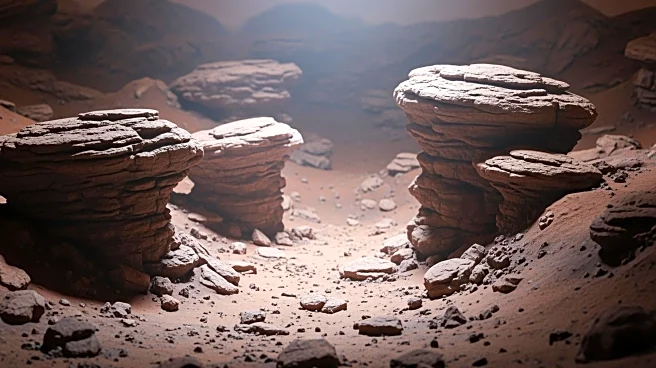What's Happening?
The interstellar object 3I/ATLAS, which recently passed by the Sun, has exhibited unusual behavior by losing its expected cometary tail. This development has led Harvard astrophysicist Avi Loeb to propose
that the object might be an artificial alien craft. Typically, a comet passing the Sun would display a massive coma with dust and gas forming a tail due to solar radiation pressure and solar wind. However, 3I/ATLAS appears intact, showing only a compact source of light, which defies conventional explanations. Photographs from the R. Naves Observatory in Spain revealed no tail of debris, which was anticipated as the object encountered the Sun's force. Loeb suggests that the narrow angle of observation might be a factor, but as the object continues its journey, more detailed measurements will be possible.
Why It's Important?
The disappearance of the tail from 3I/ATLAS challenges existing scientific understanding of cometary behavior, potentially indicating a breakthrough in astrophysical research. If the object is indeed artificial, it could have profound implications for the study of extraterrestrial life and technology. This event may prompt further investigation into the nature of interstellar objects and their origins, influencing future space exploration missions and scientific inquiry. The possibility of an artificial alien craft could also impact public interest and policy regarding space research and funding.
What's Next?
3I/ATLAS is currently moving towards Jupiter, where it will pass closely on March 16. Observations from NASA and the European Space Agency orbiters are planned during this phase of its journey. The scientific community is awaiting the release of high-resolution images from NASA's Mars Orbiter's HiRISE camera, which could provide more insights into the object's nature. These observations will be crucial in determining whether 3I/ATLAS is a natural comet or something more extraordinary.
Beyond the Headlines
The potential identification of 3I/ATLAS as an artificial object raises ethical and philosophical questions about humanity's place in the universe and the possibility of contact with extraterrestrial civilizations. It may also influence cultural perceptions of space exploration and the search for alien life, encouraging a reevaluation of scientific priorities and international collaboration in space research.
